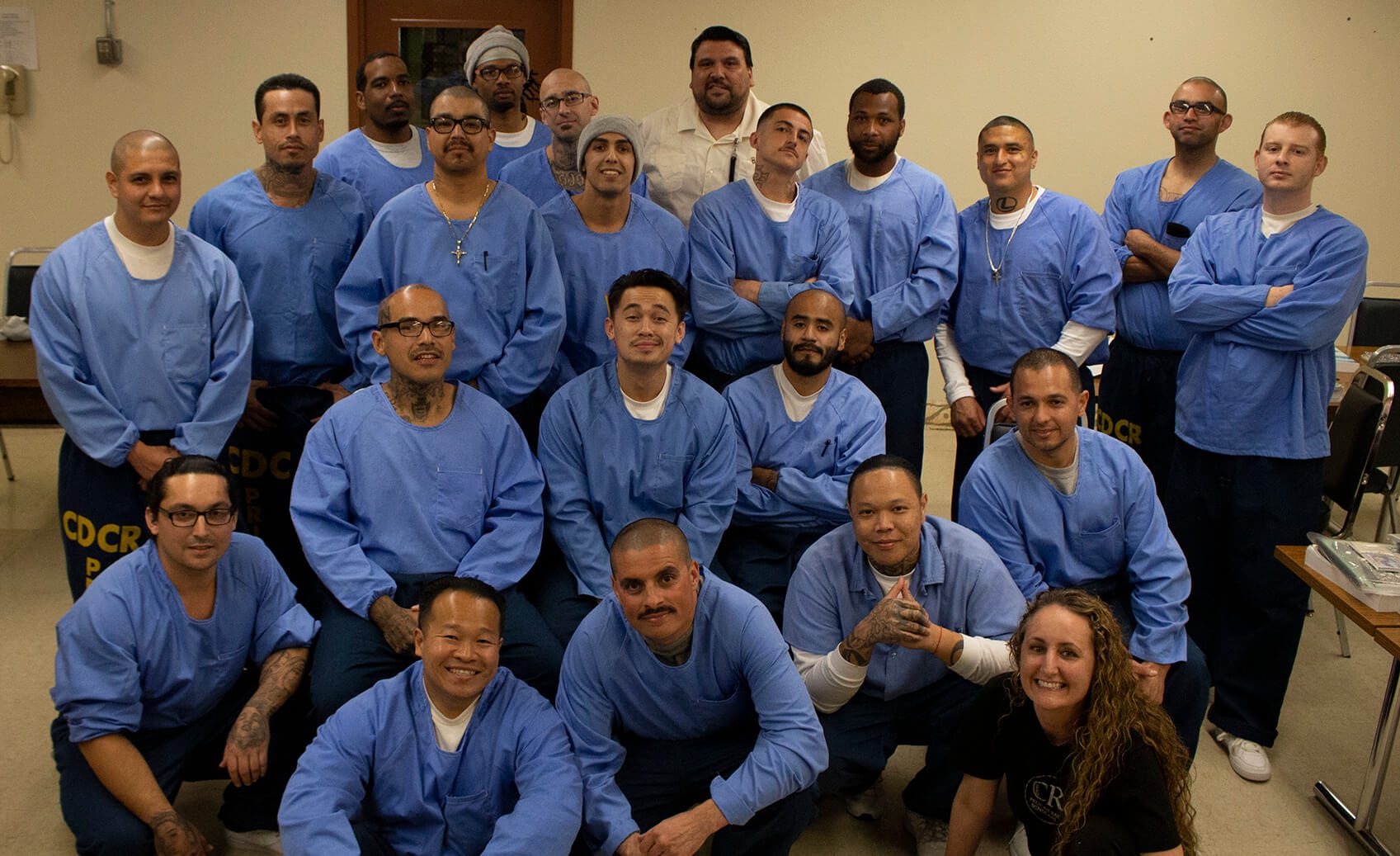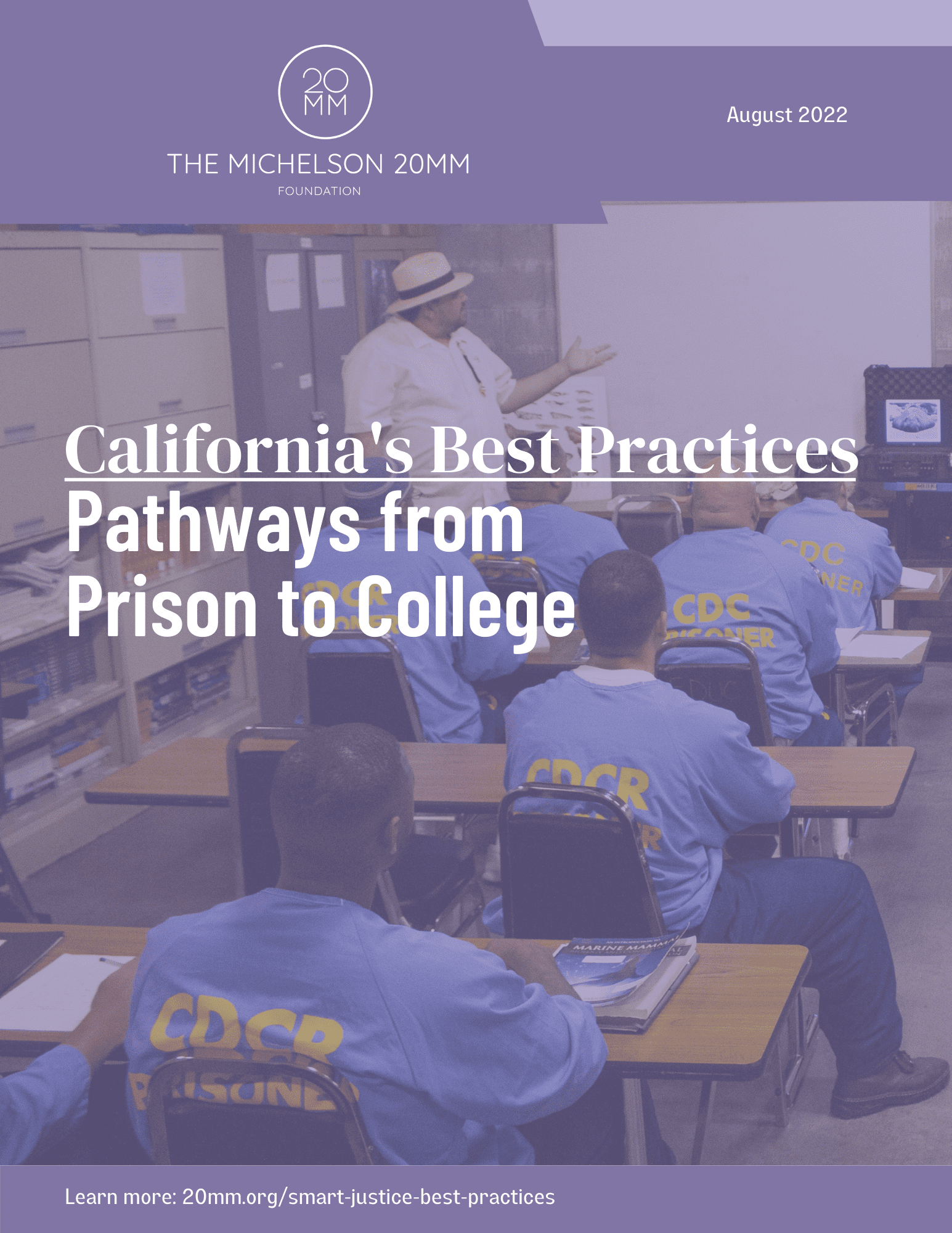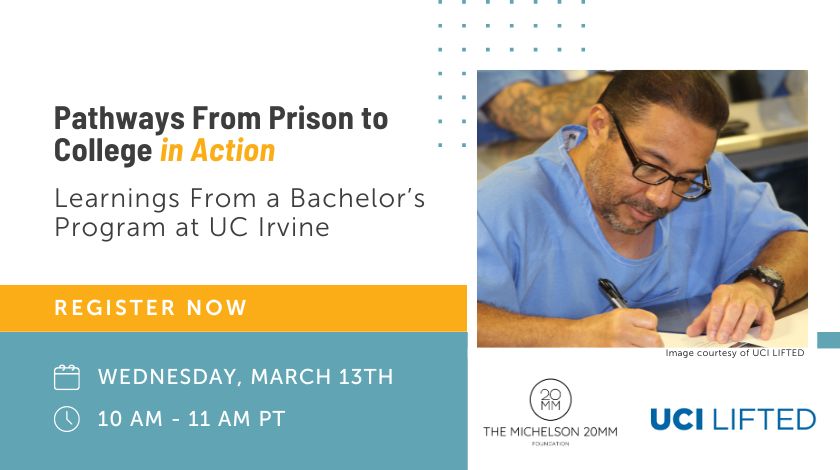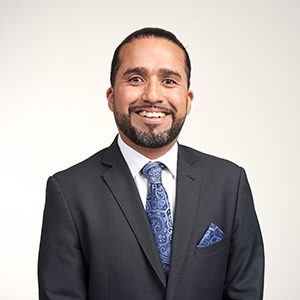California’s Best Practices:
Pathways From Prison to College

Programs such as Pelican Bay Scholars at College of the Redwoods provide face-to-face college courses to incarcerated students.
Photo credit: Tony Wallin-Sato
Ensuring that all currently and formerly incarcerated persons have an equal opportunity to succeed as students and individuals
All students deserve the right to an equal opportunity to succeed as students and individuals–this is the philosophy behind California’s Best Practices: Pathways from Prison to College. In 2021, the Michelson 20MM Foundation convened leading experts, advocates, and student leaders to form the Smart Justice Think Tank (SJTT). The Best Practices identified are directly informed by the lived experiences of justice-impacted scholars and their academic advisors/mentees.
Guided by the belief that higher education can lead to a better quality of life for currently and formerly incarcerated students, their families, and entire communities, the Michelson 20MM Foundation in partnership with Root and Rebound formed the SJTT with the goal of mapping out Best Practices for supporting currently and formerly incarcerated students in their educational journey.
Building on California’s success in growing access to higher education for current and formerly incarcerated individuals, this resource lays out detailed strategies to support students across three key phases:
- Students currently incarcerated
- Students transitioning from prison to campus
- Students enrolled on campus who were previously incarcerated
Post-secondary prison education programs, correctional facilities, on-campus support programs, and higher education institutions all stand to benefit from adopting the Best Practices identified in this resource to center the unique needs of currently and formerly incarcerated scholars.
Download a copy of California’s Best Practices: Pathways from Prison to College

Take the Prison to College Pledge
Help us spread the word and grow this incredible community of education advocates by adding your name to the list of individuals and organizations committed to centering the needs of currently and formerly incarcerated students.
Upcoming Event
Pathways From Prison to College in Action: Learnings From a Bachelor’s Program at UC Irvine
Join us on March 13, 2024, for “Pathways From Prison to College in Action” as we highlight the University of California, Irvine’s (UCI), Leveraging Inspiring Educational Futures Through Educational Degrees (LIFTED) program, which is the only UC program teaching inside prisons.
Past Events
Pathways From Prison to College In Action: Learnings From Homeboy Industries
Homeboy Industries joined us on December 6th, 2023, to share how the largest gang intervention, rehabilitation, and re-entry program in the world implements “California’s Best Practices: Pathways From Prison to College.” Watch the recording.
California’s Best Practices for Formerly Incarcerated Students Thriving on Campus
Over 1,000 formerly incarcerated students are enrolled in the California Community Colleges (CCC), California State University (CSU) and University of California (UC) campuses, based on the Campaign for College Opportunity’s estimate. On March 29th, 2023, directly impacted leaders explored how educational institutions can best support students in order to ensure their success. Watch the recording.
California’s Best Practices For Students Transitioning From Prison to Campus
Directly impacted leaders explored how educational and carceral institutions can work together to ensure student success during the third webinar in the series. Watch the recording.
California’s Best Practices For Students Inside Prison
On November 9th, 2022, justice-impacted leaders and currently incarcerated students discussed the barriers that students inside prisons face and how the Best Practices can ensure that adopting institutions break them down. Watch the recording.
Introducing California’s Best Practices: Pathways From Prison to College
On September 14th, 2022, members of the Smart Justice Think Tank and authors of “California’s Best Practices: Pathways From Prison to College” provided an overview of the recommendations and share insights on the positive impacts of investing in post-secondary education in prison, on-campus support programs for formerly incarcerated students, and pathways to economic success. Watch the recording.
Frequently Asked Questions
What is the Smart Justice Think Tank?
The Smart Justice Think Tank seeks to ensure that all currently and formerly incarcerated persons have an equal opportunity to succeed as students and individuals. It is a coalition of formerly incarcerated students, directly impacted leaders, faculty, staff, administrators, non-profit leaders, researchers, and supporters of higher education programs in prisons and on-campus support programs. As a collective, the Smart Justice Think Tank understands the value of educational programs for those able to access college in prison or on-campus.
Why were these best practices created?
There is not enough educational, financial, and mental support for students in prison and transitioning out of prison. The Best Practices serve as the first acknowledgment of the issues and an understanding of what needs to be done to get rid of these barriers.

















